Historical Information of Stones
Stones and gemstones have been around since the beginning of time. Crystals have been thought to exist for over 100,000 years formed in the earth suggesting the mineral evolution of the planet. Sanskrit dating back to 400 B.C. has been found that makes elaborate observations about the origins and powers of stones. Cultures all over the world have used stones for many reasons.
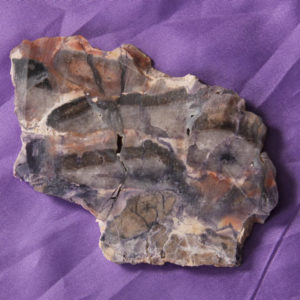
A Slice of Tiffany Stone reminiscent of the famous Tiffany glass lamps.
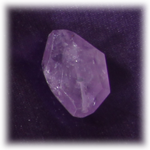
Amethyst
From the early Greeks to the present, cultures believe that the amethyst would protect one from the effects of drunkenness when consuming alcohol as well as from the intoxicating effects of being in love. This is the reason that amethyst has long been called the sobriety stone. This stone has a long history with religious practices.
In the Egyptian Book of the Dead, instructions are given for placing a heart-shaped amethyst on the body of the deceased. The Chaldean Magi believed this stone protected against evil sorcery and brought its bearers success and good luck. At one time in China, pieces of amethyst were rented to people involved in lawsuits, as the stone was said to give one a more positive outlook, thus attracting a favorable outcome. Amethyst was also said to grant an understanding of hidden knowledge.
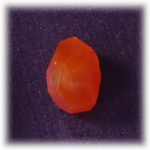
Carnelian
The name Carnelian heralds from the Latin word carnes and translates to flesh, probably noted as one of the many shades of the stone. Another name for carnelian was cornelian, most likely derived from the Latin word cornum meaning cherry. Carnelians were used in ancient Egyptian magic as protection for both the living and the dead. They carried carnelian on and about their bodies as a source of constant renewal and vitality. Carnelian was also told, in the Egyptian Book of the Dead, to be placed in the tombs as magic armor for life after death.

Crystal
It is said crystal stones have been utilized for many purposes for over 100,000 years. It is believed that the ancient civilizations of Atlantis and Lemuria could harness and channel the power of crystals. These civilizations would use crystals as beacons of light that would serve as telepathic communications with their forefathers. Lore has it that there were some survivors of Atlantis that were able to perpetuate the knowledge and power of crystals to the root civilizations of Egypt, South America and Tibet.Native American legend believes there are 13 ancient crystal skulls that are the size of human skulls and are said to have spoken or sang. These skulls contain important information about the origin, purpose and destiny of mankind. It is said that this information is vital to the survival of this planet and the human race. This legend has been handed down through generations of many different Native American tribes over thousands of years including the Mayan, Aztec, Pueblo, Navajo, Cherokee and Seneca. The one belief that is common to all tribes is that the human race must be morally and spiritually ready before the information contained within the crystals is made available.
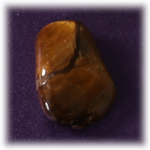
Golden Tiger’s Eye
Tiger’s eye is created from the mineral quartz, which is the most common mineral on the earth and makes up to 12% of the earths crust. Tiger’s eye has been known for thousands of years and has many medicinal and mystical properties associated with it. It is said to stabilize one and to protect the wearer from evil and illness.Ancient Chinese people were fascinated by stones that exhibited an inner glow of light, like the Tiger’s eye. Tiger’s eye stones were thought to bring good fortune to the wearer. Roman soldiers wore Tiger’s eye for protection in battle. Tiger’s eye was thought to be all-seeing due to its eye appearance.
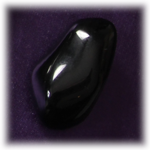
Onyx
The Romans named a dark stone with white and yellow veins onyx the Greek word for fingernail or claw because the veins resembled fingernails. According to Greek and Roman mythology, Cupid used the point of an arrow to give the goddess Venus a manicure as she slept along the Indus River. As her cut nails fell into the water, they were magically transformed into onyx when they reached the bottom of the river. For centuries, onyx has been used as a worry stone and in worry beads. Persians would place onyx on the stomach of a pregnant woman during labor to decrease the pains.Thousands of years ago, onyx was used to create handles or bases for items made of gold, as well as for stone inlay work. Onyx was also traditionally used for carving cameo brooches. Onyx seals were very popular with the Romans, who carved the pattern of the seal in negative relief to give a raised point. Onyx was worn as a protective stone when facing adversaries in battles of all kinds or while hurrying down a dark street late at night. In 250 B.C., an onyx was chosen as one of the 12 stones in a vestment made of gemstones for the breastplate of Aaron.
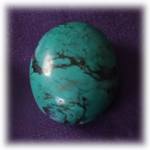
Turquoise
In some history, turquoise is given its name from the Middle Ages and from an old French word, turqueise, meaning Turkish stone. Turquoise is undoubtedly one of the oldest gemstones known to man having been discovered in ancient Egyptian tombs, dating back as far as 3000 B.C. It has been considered a good luck talisman by many civilizations including the Persians, the Aztecs and indigenous American Indian tribes.The Persians in particular believed that the act of a turquoise changing color was a sign of impending danger. For this reason, turquoise gems were often used to bejewel daggers and turbans as an effective method of warding off the evil eye.
The Native American Indians believed that wearing turquoise jewelry provided a direct connection to the heavens above and sources of abundant water supply below. The Aztecs believed the turquoise stone was holy and often adorned their ceremonial masks. Turquoise was used in ancient Greece and by the Egyptians for adorning tombs, making jewelry and producing color for everything from paint to clothing dye. Egyptians prized turquoise as a Life Stone. The oldest pieces of jewelry set with this gem are four bracelets found on the mummified arm of Queen Zar, who ruled Egypt around 5500 B.C.
Turquoise was one of the first gemstones to be mined and used by the Chinese, Tibetans and Hindus for healing and good luck. Highly revered in Tibet, a turquoise stone was carried throughout ones entire life. It was exchanged as currency and the finest turquoise stones were considered more valuable than gold. Even the famous William Shakespeare documented turquoise stone with the ring given to Shylock in the Merchant of Venice.
One of the first gemstones to be mined, turquoise is known as a stone of protection and communication on every level. It is considered a symbol for generosity, sincerity and affection. Turquoise is still valued as a power stone and will strengthen and cleanse your energy centers by clearing your mind and opening you to the universal all.
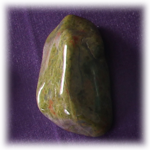
Unakite (or Epidote)
Unakite stone takes its name from the Greek word epidosis, meaning growing together, and it is these materials bound together that convey the meaning, what comes together, belongs together. The granite, green epidote, quartz and feldspar are an important group of rock-forming minerals which make up as much as 60% of the Earth’s crust. Legend tells us that one who carries unakite will find things that have been lost. The name unakite was attributed to the stone after the Unaka range of the Great Smoky mountain range of eastern Tennessee and western North Carolina where it was originally discovered in 1874 by Mr. Bradley. It is the state stone of Virginia.
On occasions Unakite has been used for making tiles. A particularly notable example is the floor tiles of the main terrace of the Natural Museum of Natural History-The Smithsonian Institute in Washington, D.C.

Tiffany Stone(Opal Fluorite, Bertrandite, Ice Cream Opalite, Purple Opal)
The actual name Tiffany Stone was given to the stones from the Beryllium mines in Utah by Todd Harris, a local miner, and refers to opal fluorite with beautiful purple color tones. Mr. Harris thought that the slices of stone, with the different properties running through the stone, resembled the famous, Tiffany glass lamps. The stone has other minerals such as quartz, chalcedony, dolomite, rhodonite, manganese oxides, bertrandite, beryl, slid white or translucent-yellowish opal and other elements. The best stones are the opalized pieces. The end result is that Tiffany Stone nodules are rare (consequently expensive) because of their limited geographic location and because the beautiful blue to purple color tones are harder to find appearing in the stone material.



